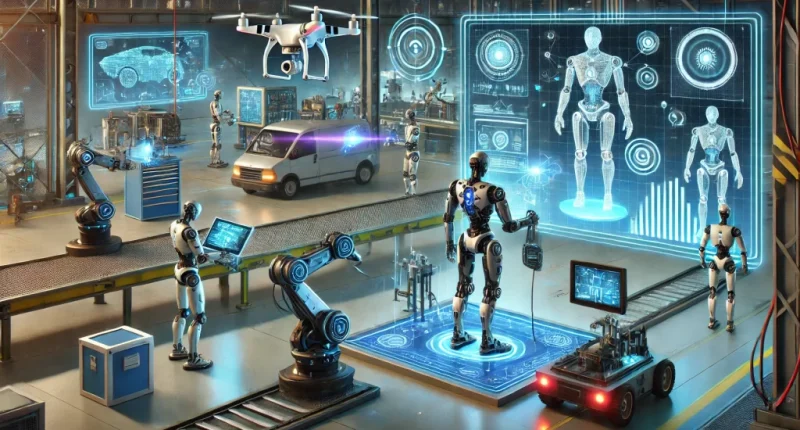Rise of Versatile Automation
Polyfunctional Robots Redefine Robotics
Polyfunctional robots, designed to perform multiple tasks, are transforming industries by replacing single-purpose machines. Unlike traditional robots tailored for specific functions, these adaptable systems leverage modular designs and AI to handle diverse roles, from warehouse logistics to healthcare assistance. By 2030, Gartner predicts 80% of humans will interact daily with smart robots, up from less than 10% in 2024, driven by their efficiency and scalability in human-centric environments. Companies like Amazon and Siemens are deploying these robots for tasks like sorting, packaging, and manufacturing, boosting productivity and reducing costs.
AI-Driven Robot Capabilities
Modular Design and Intelligence
The versatility of polyfunctional robots stems from advanced AI, including deep learning for object recognition and reinforcement learning for autonomous decision-making. Modular hardware, such as interchangeable end effectors (e.g., grippers, welders), allows seamless task transitions. For instance, Boston Dynamics’ Spot robot performs inspections and maintenance, while healthcare robots like Pepper assist with patient care and administrative tasks. These systems integrate sensor fusion—combining LiDAR, thermal cameras, and ultrasonic sensors—for real-time environmental adaptation, making them ideal for dynamic settings like retail and agriculture.
Neurological Enhancement Breakthroughs
Brain-Machine Interfaces Advance Cognition
Neurological enhancement, particularly through brain-machine interfaces (BMIs), is revolutionizing cognitive and motor capabilities. Technologies like Neuralink and Synchron’s bidirectional BMIs enable users to control devices with thoughts, with applications in upskilling, marketing, and rehabilitation. Gartner forecasts that by 2030, 30% of knowledge workers will rely on BMIs to stay competitive, up from less than 1% in 2024. These systems decode brain signals via electroencephalography, offering potential for memory enhancement and real-time emotional analysis, though long-term benefits in real-world settings remain under study.
Rehabilitation Robotics and Neuroplasticity
Robot-Aided Therapy Enhances Recovery
Polyfunctional robots are increasingly vital in neural rehabilitation, leveraging neuroplasticity to aid recovery from conditions like stroke and spinal cord injuries. Robot-assisted systems, such as the da Vinci Surgical Robot, enhance precision in surgeries, while wearable exoskeletons controlled by BMIs help patients regain mobility. Studies, like those from MIT’s 1998 trial with stroke patients, show that robotic therapy supports motor recovery without adverse effects. These robots use AI to adapt support based on patient progress, addressing disabilities in specific populations like traumatic brain injury and muscular dystrophy.
Challenges in Development and Ethics
Technical and Moral Hurdles
Despite their potential, polyfunctional robots face challenges like high development costs, complex programming for task transitions, and energy demands. Neurological enhancement raises ethical concerns, including autonomy, privacy, and equitable access. For instance, if 50% of Fortune 500 companies collect bioinformation by 2034, as Gartner predicts, issues of data misuse and social inequality may arise. Robust signal processing and a deeper understanding of brain function are needed to ensure reliable outcomes, particularly for cognitive BMIs in dynamic environments.
Future Prospects and Integration
Synergy of Robotics and Neurotech
The convergence of polyfunctional robots and neurological enhancement is set to reshape industries and daily life. By 2033, spatial computing, integrating AR/VR with robotics, is projected to reach a $1.7 trillion market, enhancing human-robot collaboration. In healthcare, robots could combine BMI-controlled therapy with tasks like medication delivery, while in workplaces, enhanced cognitive abilities may boost productivity. However, addressing ethical, regulatory, and technical barriers will be crucial to ensure these technologies deliver safe, equitable benefits across sectors like education, logistics, and eldercare.









